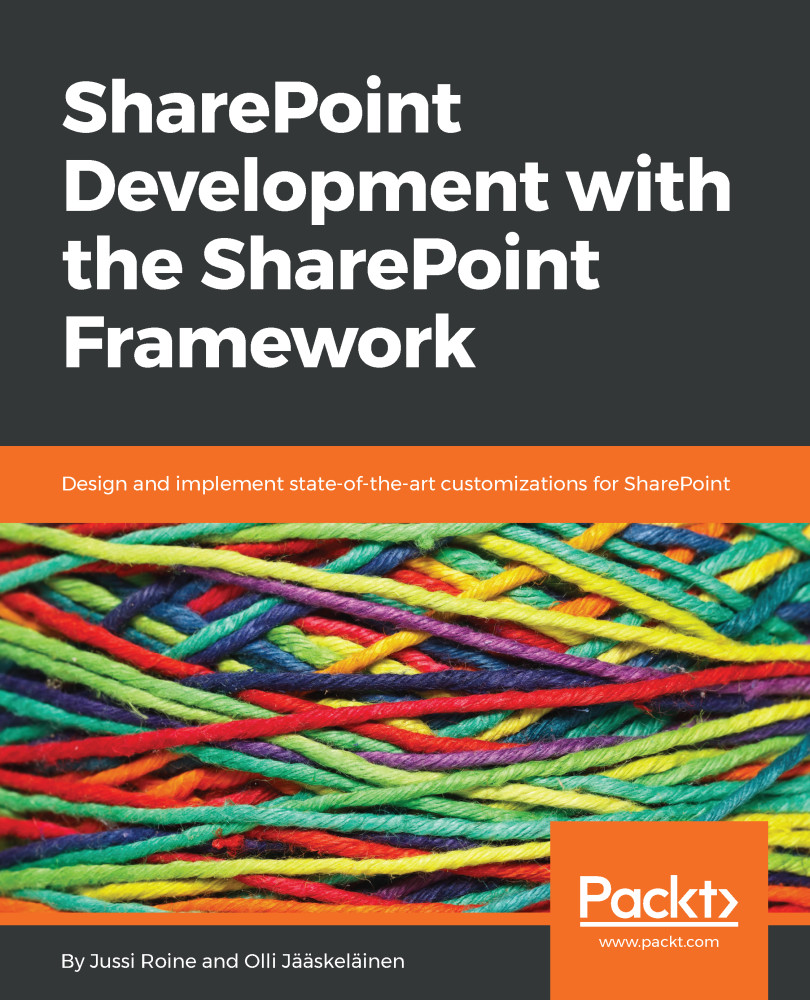Office 365 licensing
While licensing is out of the scope for this book, we feel it is important for developers to understand the rough edges and limitations of a given service in order to be able to build performant and robust cloud solutions.
Office 365 licensing is a fixed per-user license that is billed monthly (or yearly if you choose to pre-pay for a full year). You can have one or more different types of licenses, but only one license type at any given time for a specific user. You can, of course, purchase a higher tier license, assign it to a user, and later change that to a lower tier license when the needs of the user change.
When writing about public cloud services such as Office 365, it is an assumption nowadays that prices fluctuate. You can always verify the current prices at http://www.office365.com. Make sure to change your country at the bottom of the page to get pricing in your preferred currency.
Note
Office 365 licenses are sold for home use, business use, and enterprise use. When researching suitable licenses for yourself or your users, make sure you choose the correct category of licenses in order to find the best one for your needs.
Choosing an Office 365 license for development use
When you choose developer solutions for SharePoint Online, you have to choose one of the organization licenses for Office 365. The available licenses are in two license families; the B (Business) and E (Enterprise) license families. Most developers working on SharePoint Online commonly use E-licenses. This is mostly for minimizing any impending issues when deploying your code in the future, as E-licenses have most of the features one might need within SharePoint Online.
Over the years, many have complained about the complex licensing models Microsoft imposes on some of their products. SharePoint on-premises tended to have all kinds of small limitations, connector licenses, and similar things, to look out for that plagued many development projects in the early 2000 and 2010's. Office 365 is a different breed as licensing is very opaque and easier to understand. As stated before, you will need at least one license for your development use and additional licenses for any users who might be accessing your solutions that you aim to deploy to SharePoint Online.
We recommend you use a license from the E-family of plans, such as E1, E3 or even E5, which, at the time of writing, is the license offering the most features for Office 365 services. It is also the most expensive license.
Note
You can see a detailed listing of all E-family plans and their respective features at https://products.office.com/en-us/business/compare-more-office-365-for-business-plans.
SharePoint Online is available for E1, E3, and E5, so from that perspective, there is little difference when starting development on SharePoint Online. Keep in mind that certain minuscule features might differ or might not be available in E1 if they are available in E3 and E5. These special situations might arise at a later time, so this is something to keep in mind if you choose to go with the E1 license. Remember that you can upgrade from E1 to E3/E5 at any time in the future (unless you pre-pay for the yearly license).
This book assumes you will be using an E3 or E5 capable license, as they provide the most functionality and are generally the license model organizations choose to use for their information workers.
To enroll to Office 365, you can purchase a license at https://products.office.com/en-us/business/office-365-enterprise-e3-business-software.


































































